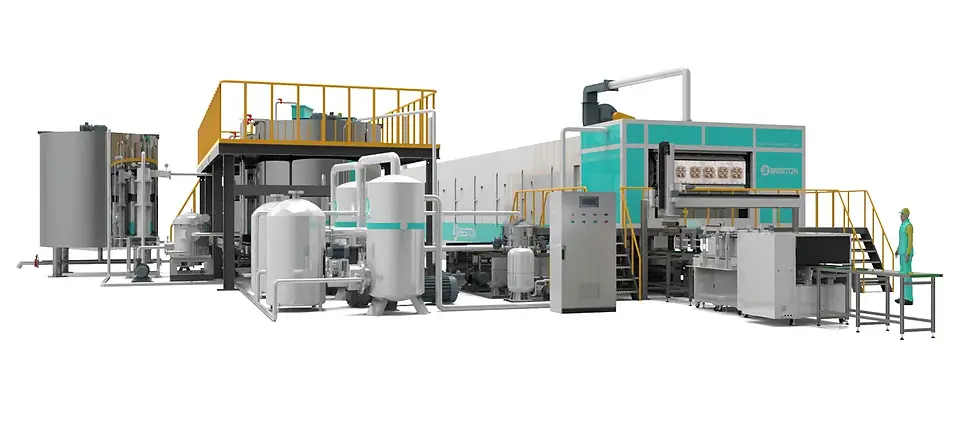Energy Consumption Analysis of Modern Coffee Cup Tray Machine Systems
- june11433
- May 18
- 2 min read
Energy efficiency has become a decisive metric in evaluating the performance of modern pulp molding machinery. The coffee cup tray machine, as a key asset in the production of molded fiber packaging, is subject to growing scrutiny regarding its energy footprint. Operators and investors are increasingly driven by the dual pressures of operational cost control and environmental compliance.
Power Demand Across Production Stages
A typical coffee cup tray machine operates through three primary phases: pulp preparation, forming, and drying. Each stage contributes distinctively to total energy consumption. Pulp preparation, involving hydraulic pulping and homogenization, generally accounts for 15%–20% of total system energy. This is largely due to motor-driven agitators and grinding mechanisms that process waste paper or virgin pulp into slurry form.
The forming section, reliant on vacuum pumps and compressed air systems, is a moderate consumer. However, its contribution to energy use escalates with the incorporation of precision-molding and servo actuation technology, which enhances output quality but increases power draw. On average, this stage accounts for approximately 25%–30% of energy use.
The drying section remains the most energy-intensive component, consuming up to 50% or more of the system's energy. Machines employing metal drying lines or multi-layer conveyor systems require continuous heat input—usually through gas burners, electric heaters, or thermal oil systems—to evaporate moisture from molded trays. This process is critical for structural integrity and dimensional stability, but it is also the primary target for energy optimization.

Technological Interventions for Efficiency
Modern paper moulding machine designs are increasingly integrating energy recovery systems. Heat exchangers now reclaim exhaust heat from the drying tunnel and redirect it to preheat incoming air or water, reducing net energy input. Variable frequency drives (VFDs) are applied to motors and pumps to dynamically adjust power consumption based on load requirements, eliminating unnecessary energy expenditure during low-capacity runs.
Additionally, advanced programmable logic controllers (PLCs) monitor and modulate each sub-process in real time. This centralized control facilitates seamless coordination between modules, reducing idle time and inefficiencies during transitions. The integration of these smart systems has led to energy reductions of 15%–25% in next-generation machine models.
Comparative Energy Metrics
When evaluated per unit of production, the specific energy consumption of a standard coffee cup tray machine ranges from 0.5 to 1.2 kWh per kilogram of finished product, depending on the drying method and level of automation. Hot air drying systems typically consume more power compared to infrared or microwave-assisted alternatives, though the latter options remain cost-prohibitive for many small to mid-size producers.
Hybrid systems—combining solar-assisted preheating with conventional drying—are gaining traction in sun-rich regions. These setups can cut thermal energy usage by up to 30%, offering a sustainable yet economically viable alternative for off-grid or semi-rural manufacturing zones.
Outlook
As the molded pulp packaging industry scales to meet rising demand for disposable beverage trays, energy efficiency will remain central to equipment innovation. The evolution of the coffee cup tray machine is increasingly defined by its ability to deliver high output with lower energy intensity. Manufacturers that incorporate thermal optimization, automation, and resource reclamation into their systems are poised to lead the sector’s transition toward greener, leaner operations.




Comments